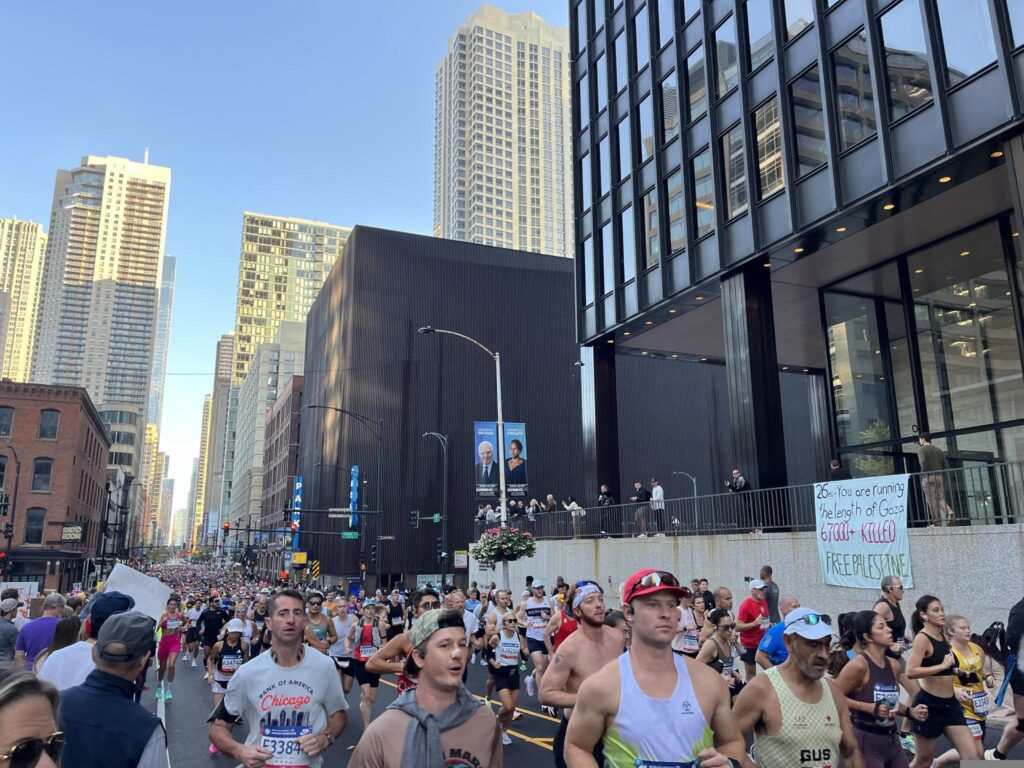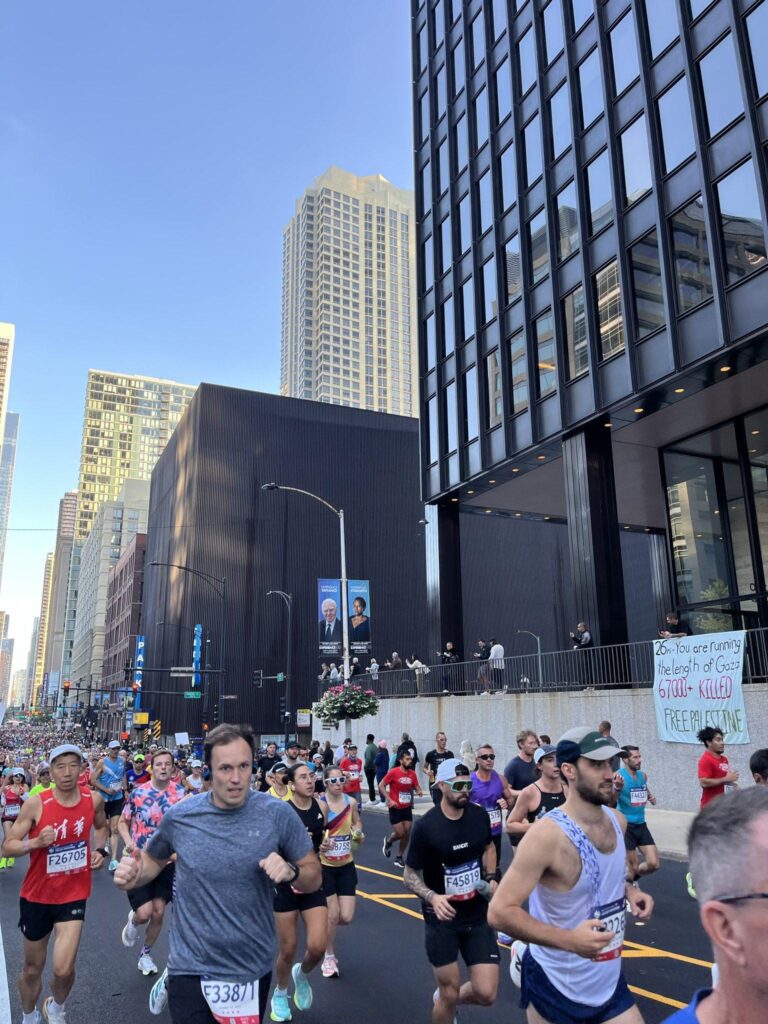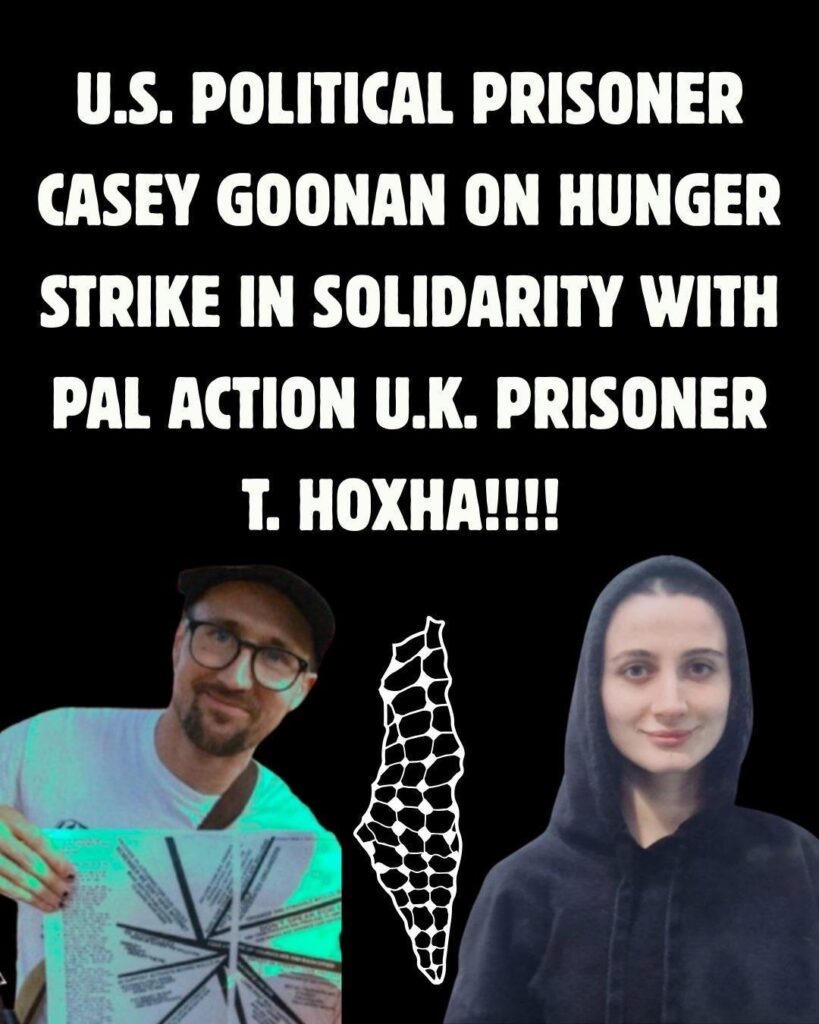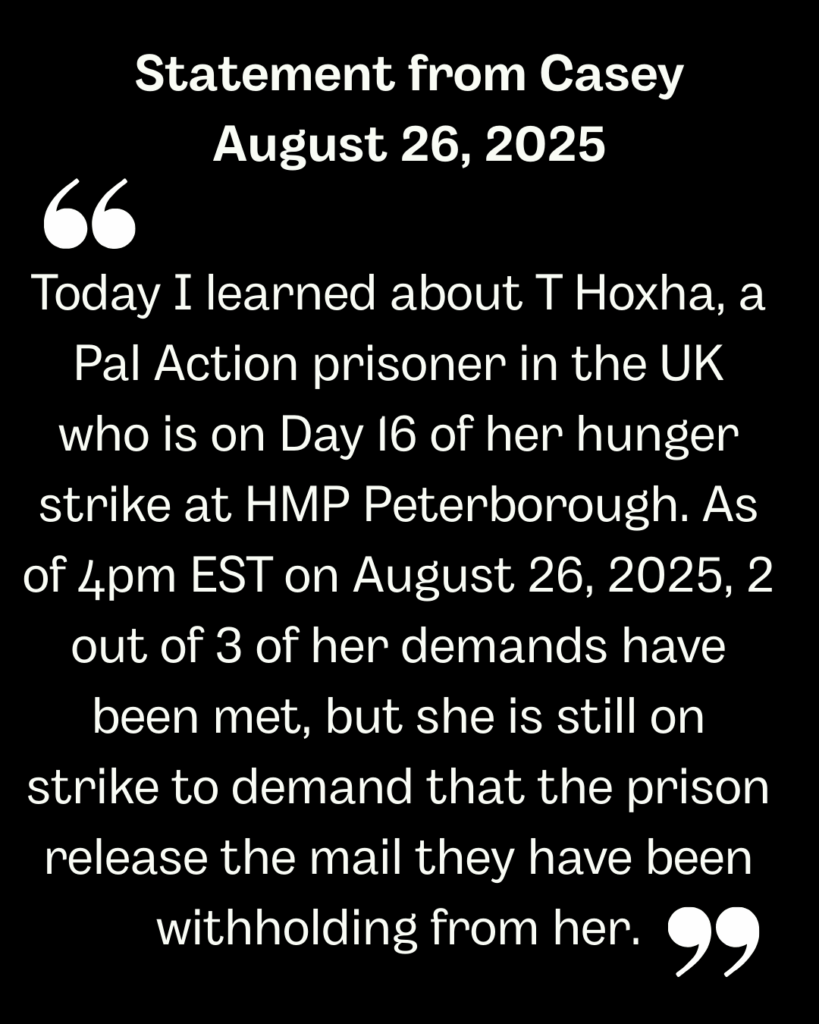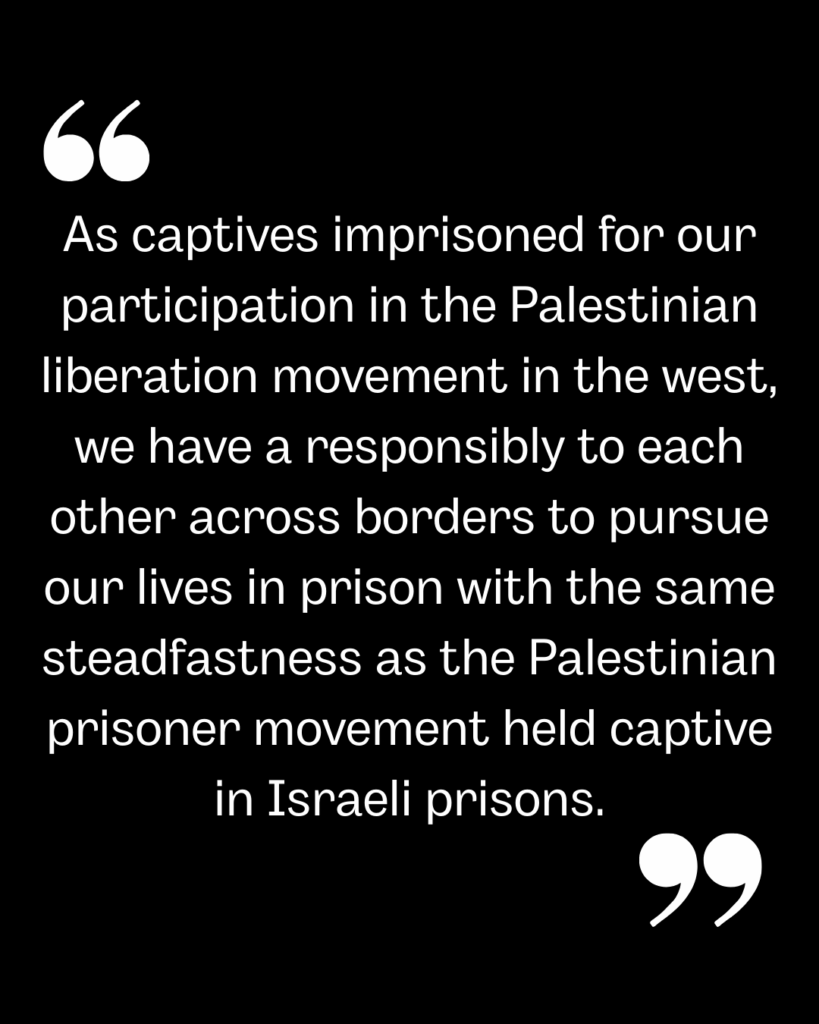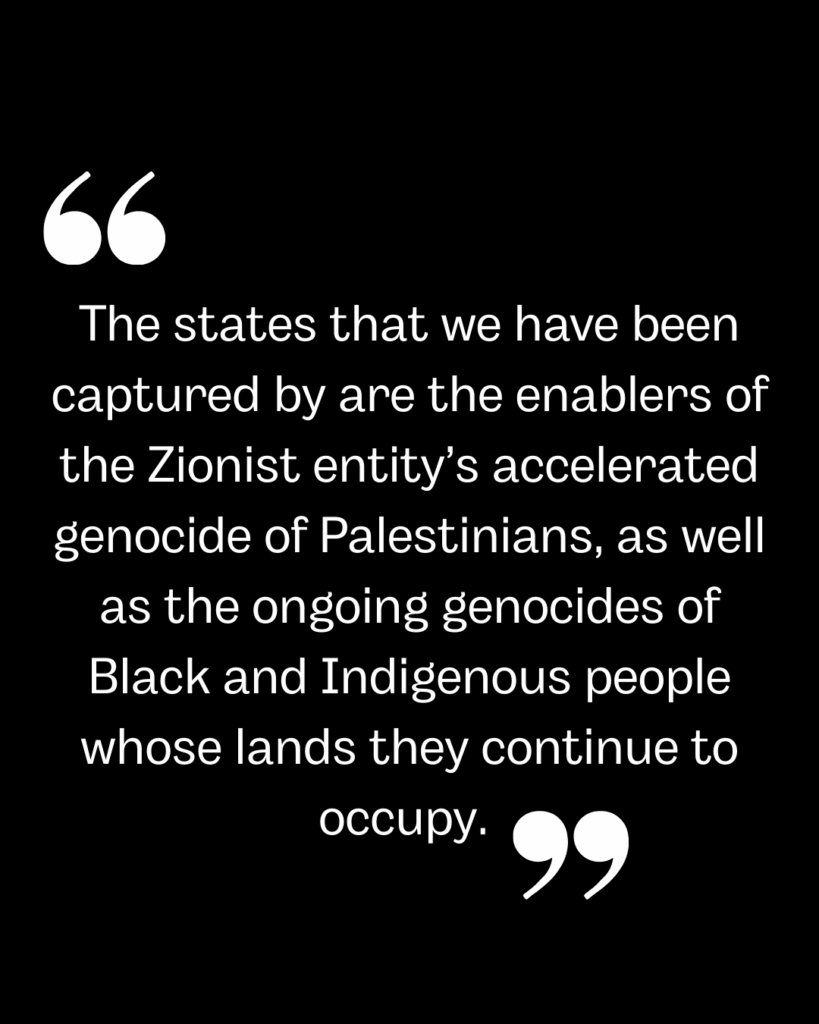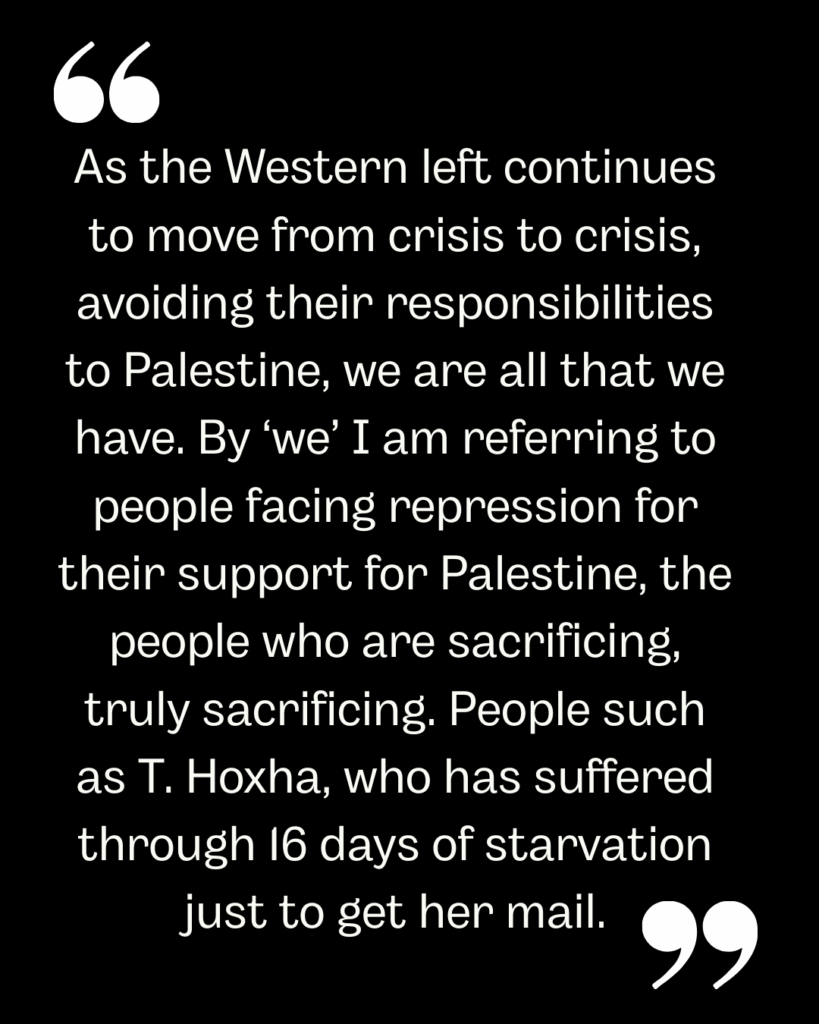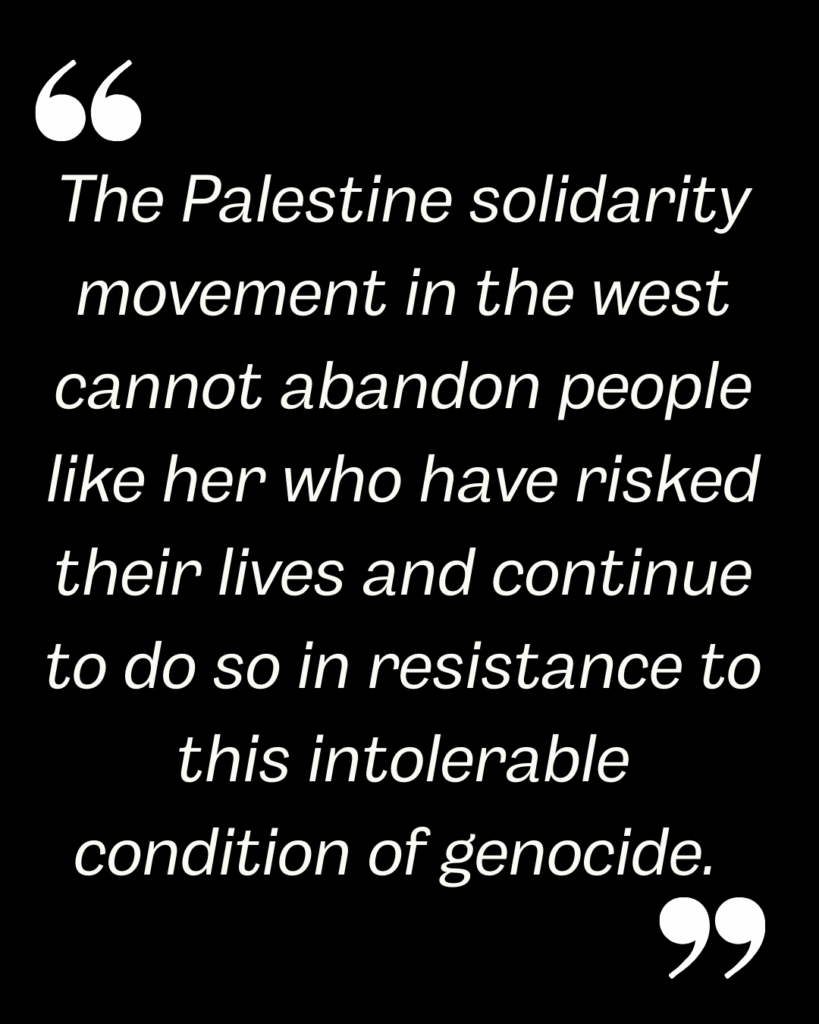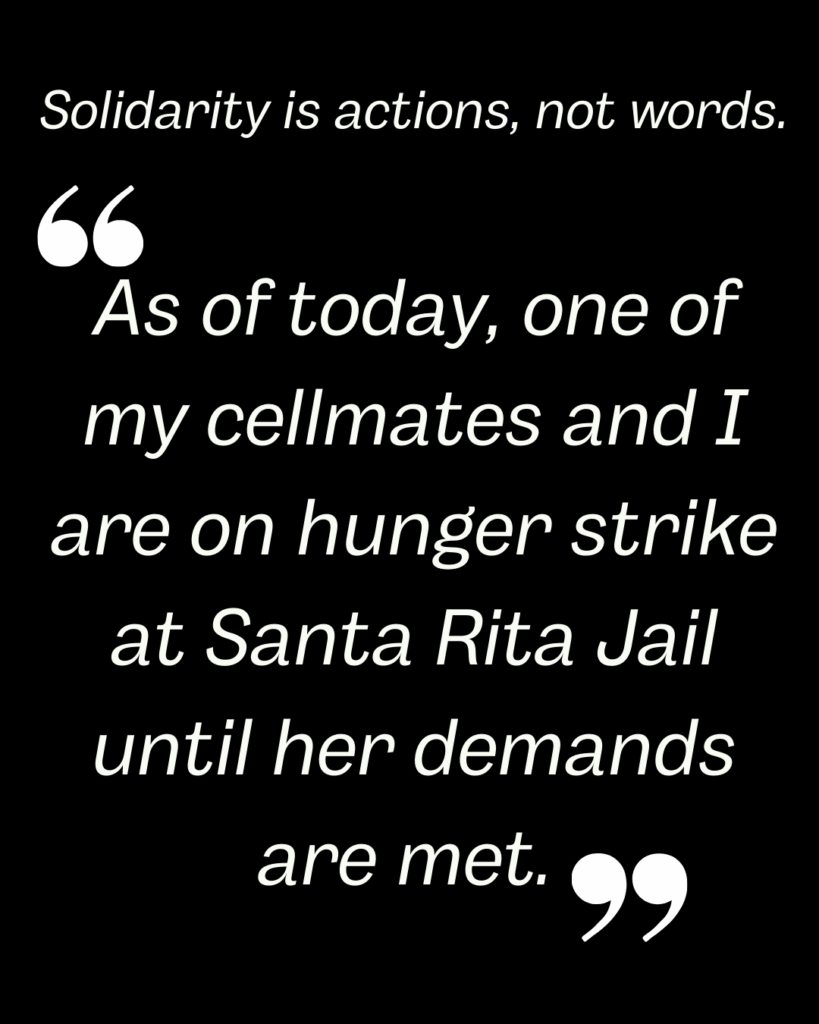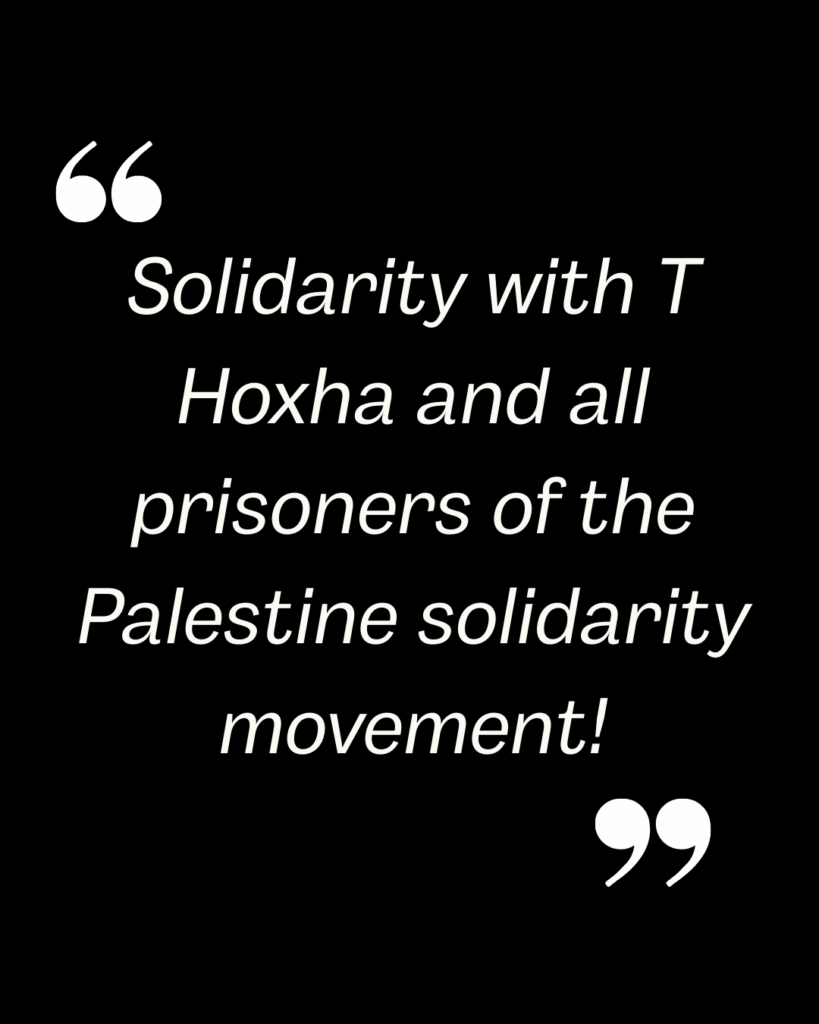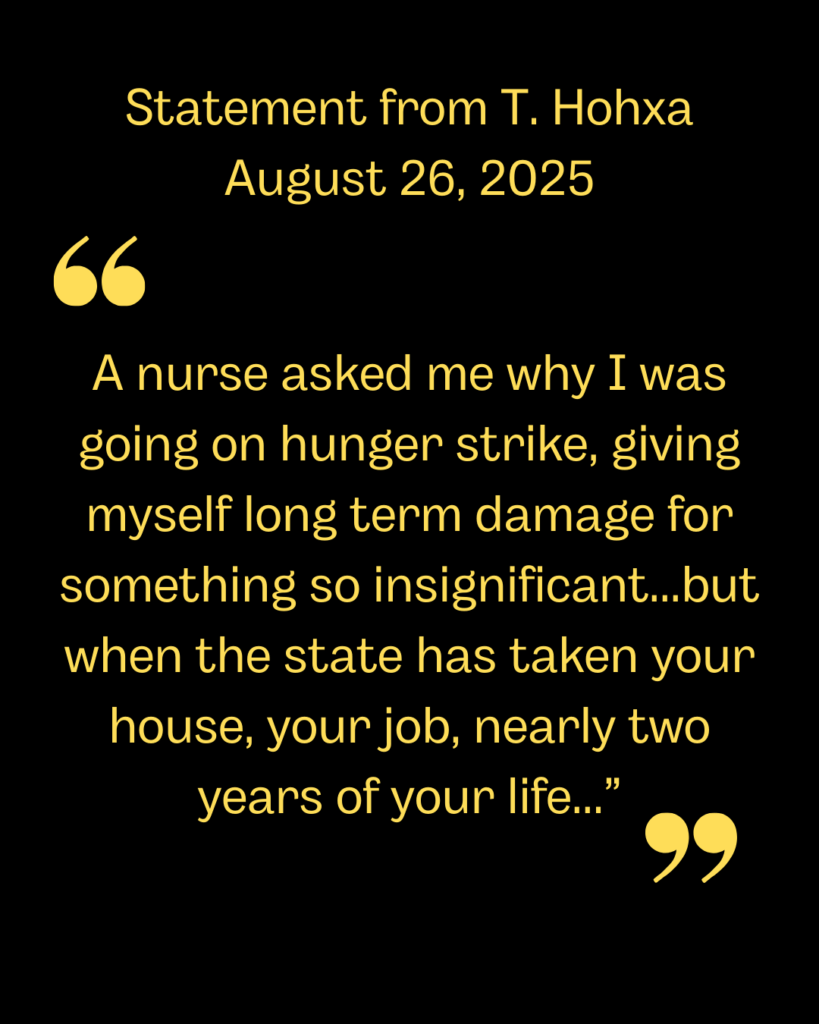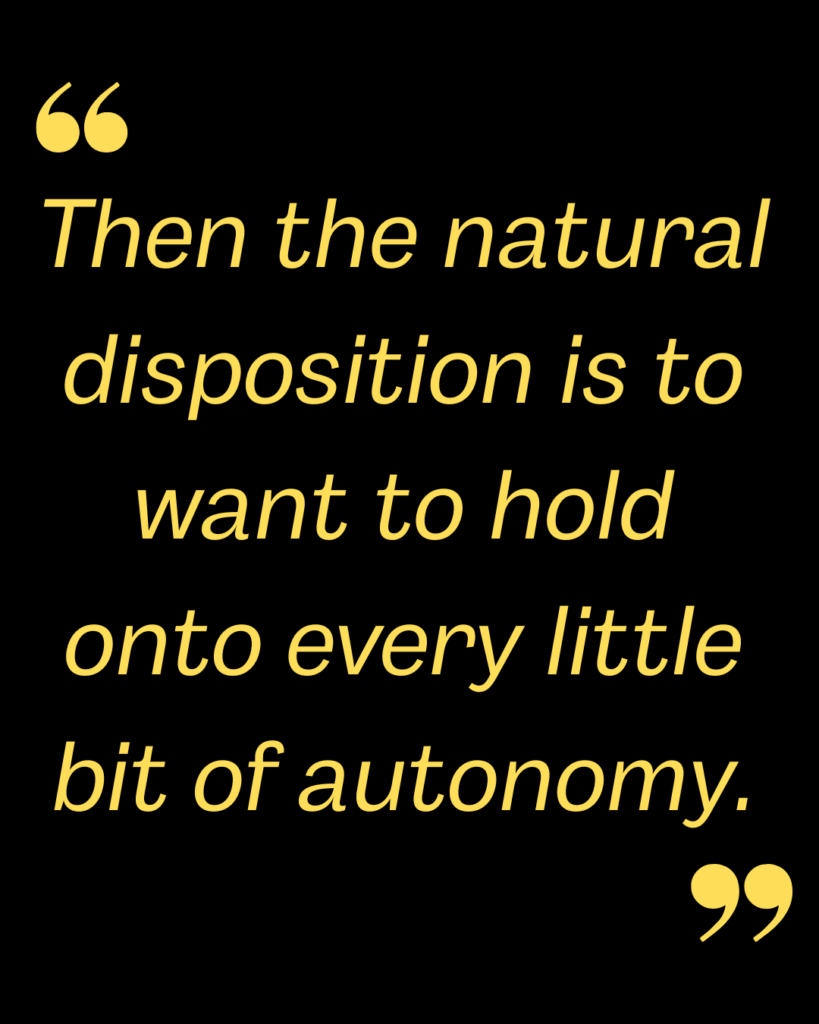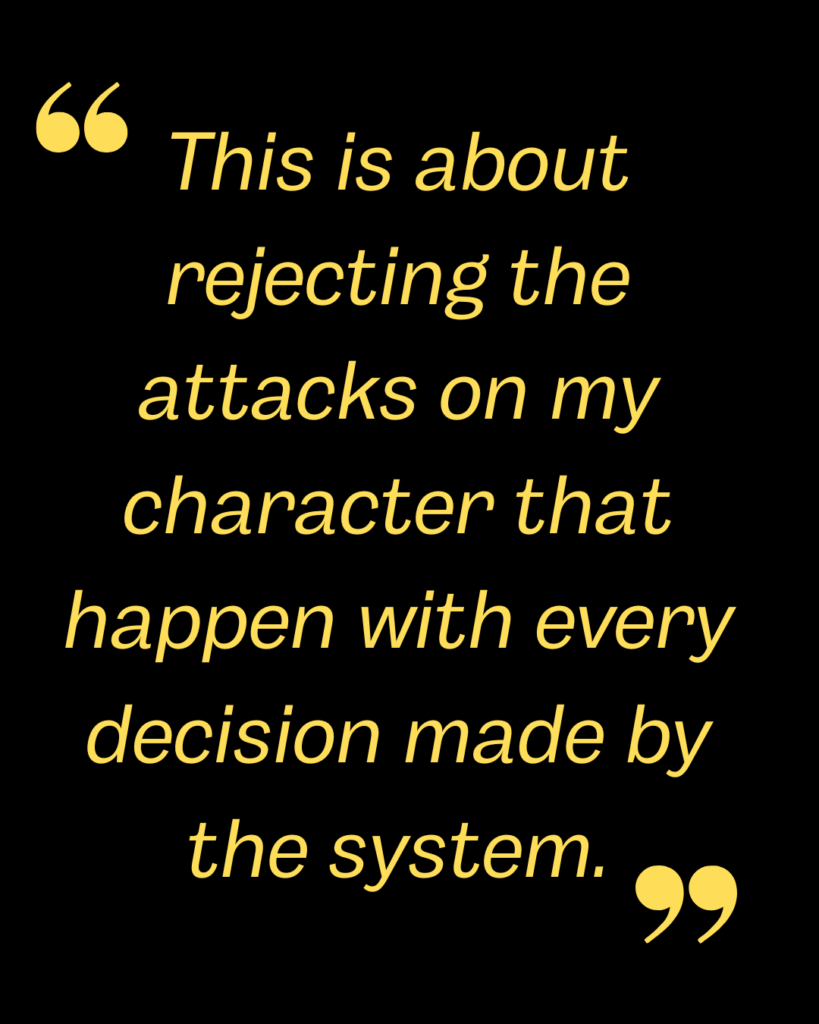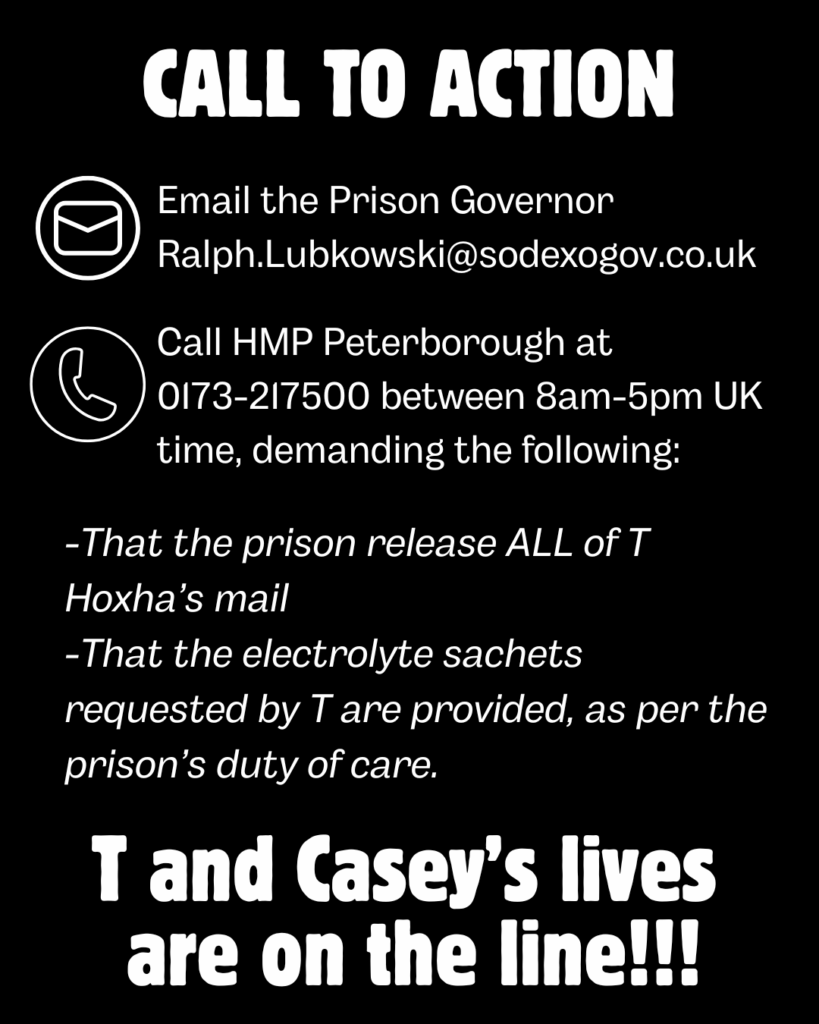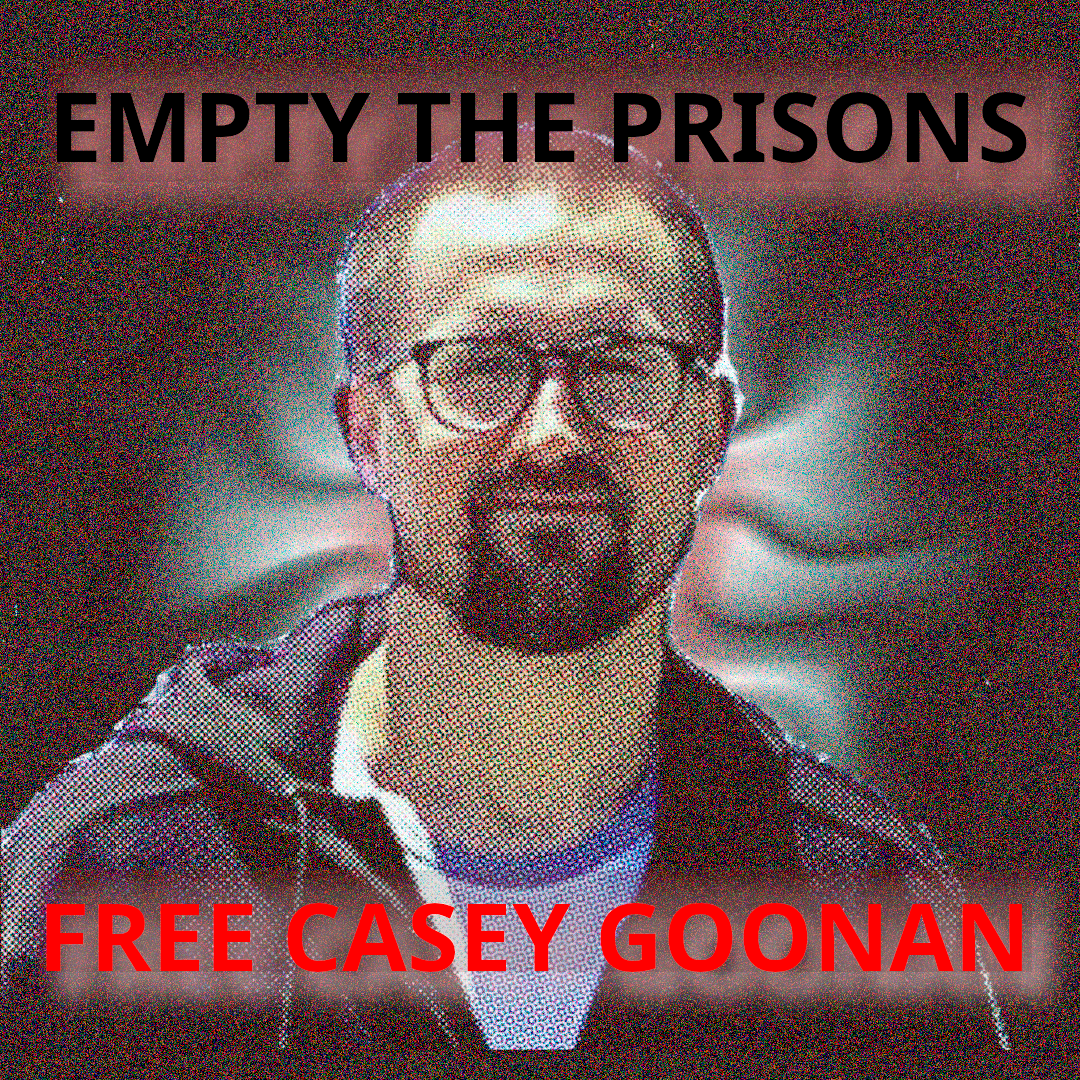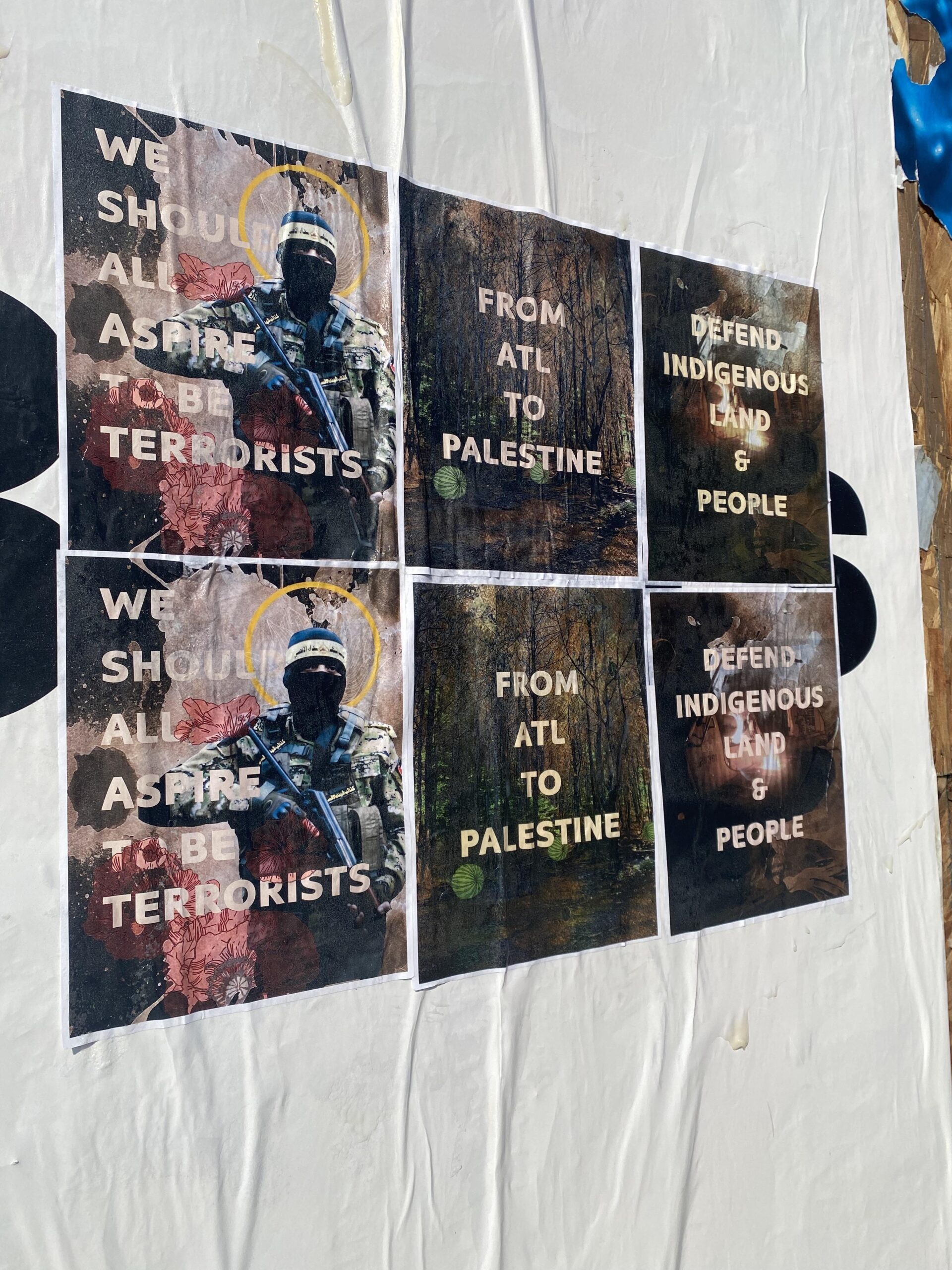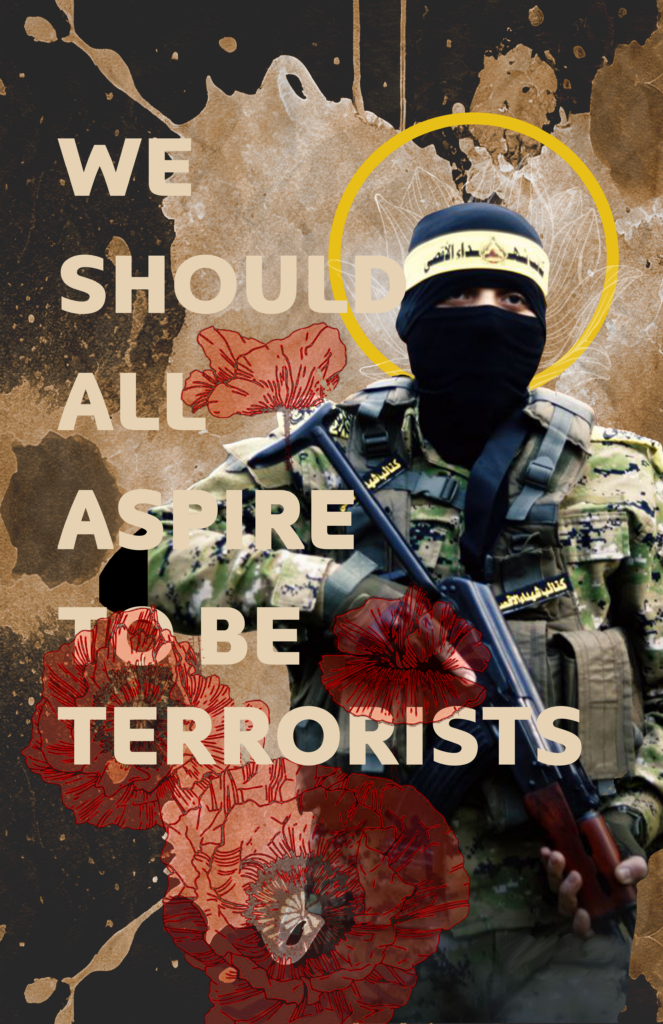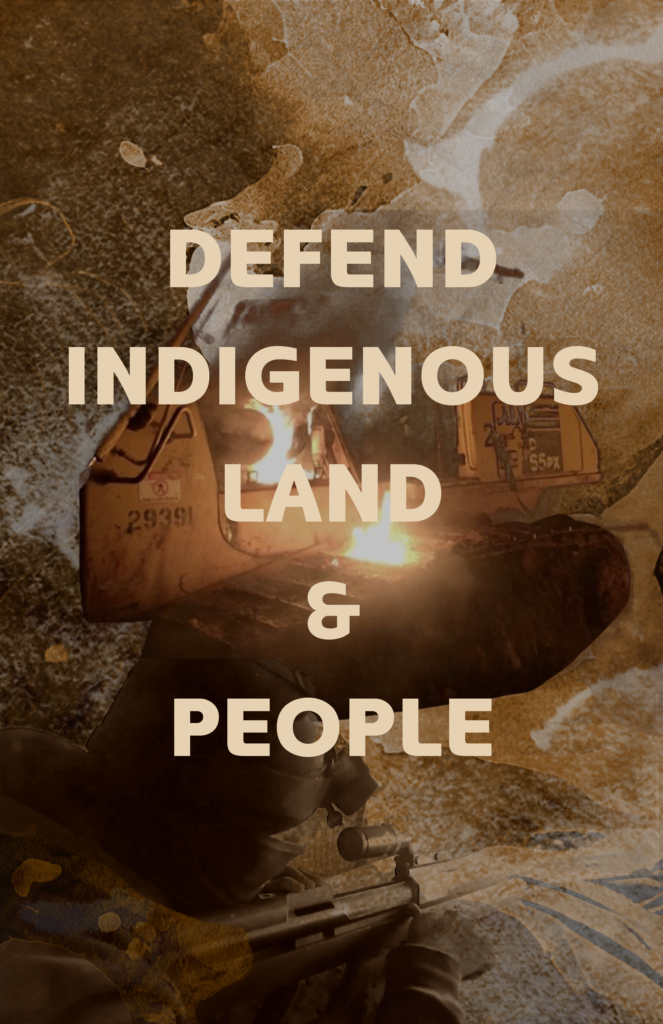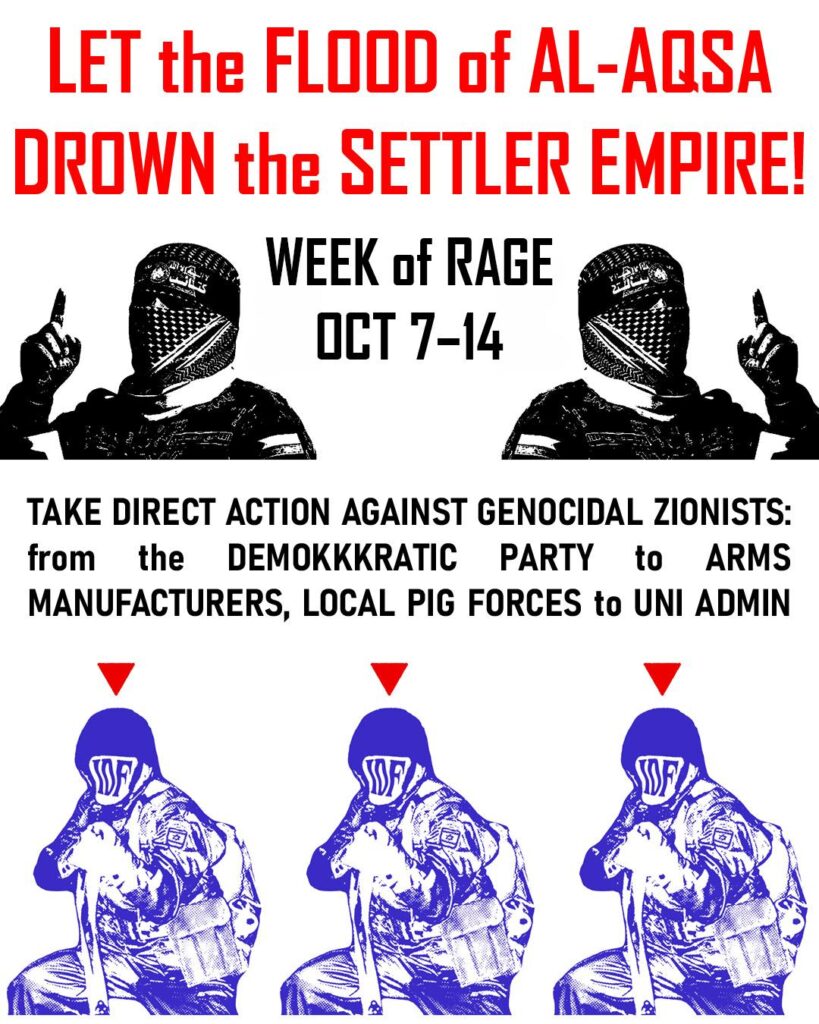This communique describes an attempt by a crew of fiends in Chicago to coordinate a disruption for a fundraising event benefitting the Illnois Friends of the IDF in March. This attempt ultimately failed to achieve its goals. The organizers hope to share what they learned during this attempt, as well as some information on the FIDF & its connection to the genocide of the Palestinian people, in hopes of inspiring & aiding the continued effort to disrupt this group.
As enemies of the IOF and the zionist state of israel, an autonomous crew began organizing against the “Friends of the IDF” Illinois Chapter. The Chapter planned to host its annual Young Leadership Bar Night & Fundraiser in the River North neighborhood of Chicago on Saturday night. They were disgusted at the thought of zionists safely gathering in bar in one of the wealthiest neighborhoods in Chicago to celebrate the genocide of Palestinians and raise funds to futher the genocide.
In deciding to disrupt a party to raise funds for the IOF’s bloodsoaked 35th Paratroopers Brigade, the crew identified 2 primary goals:
No money to the IOF. Materially prevent and/or disrupt the ability of zionists to make donations to the IOF (eg. ideally by shutting it down and/or ensuring the event does not take place as planned.)
Make zionists afraid. Instilling fear in zionists particularly to be public with their support, feel any comfort in gathering together, etc.
This crew thought about their experience with past actions to disrupt similar fascist events, and concluded that a passive sidewalk protest was unlikely to acheive either of these goals. The FIDF is very aware that it has enemies in Chicago, so having to walk past some people holding signs was unlikely to dissuade the type of people who will attend this fundraiser. In fact, it would probably contribute to their persecution complex. A public-facing call to action would also probably result in a large NGO call for a counter-protest, and the resulting peace-policing would prevent truly disruptive action from being taken.
Based on this assessment, they decided to try and coordinate a disruption only within the group, and to keep the project off social media & out of big chats unless mass support became necessary. It seemed likely that something could be done in the building where the fundraiser was going to be held, with a small number of people, that would close down the location or otherwise force them to cancel the fundraiser.
The initial advertisement said the fundraiser would be at “a River North nightclub,” and the actual address was only available to those who purchased a nearly $100 ticket. The group made a list of River North nightclubs with party spaces and did some internet sleuthing. Certain locations were ruled out due to size and other factors. The group then emailed these spaces, posing as a group inquiring on booking the space on the same day during an overlapping time. Spaces that responded and said they were available were ruled out. A different fake persona reached out to all the spaces on the list, posing as a clueless zionist mother wanting to buy her son a ticket to the gala. “I heard you’re hosting the event. Can I buy a ticket directly from you?” One of the spaces, Bodega Imports, responded, “How did you know we were hosting the gala?” And from there the crew got to work.
The process of deciding on, researching, & preparing for a disruptive plan ended up being riddled with dead ends. Supplies were unavailable, difficult to acquire in non-traceable ways, or tactics proved ineffective in test experiments. The biggest hurdle was when the event seemingly changed venues 4 days before — something that would not have been discovered if a group member hadn’t been following the social media of some FIDF admin. A story post boasted the number of tickets sold (over 650), which vastly outpaced the capacity of Bodega Imports. The apparent location change, and lack of scouted information on the new location, sent the group back to the drawing board impossibly close to the event date.
Someone floated the possibility of coordinating a group to be on stand-by for an above-ground disruption if the other routes of action failed, and the group agreed. They still wanted to cancel the fundraiser, but didn’t want it to go completely un-disrupted if that plan failed. They reached out via DM to some friends, and formed a chat with people who agreed to go to River North on the night of the event.
Despite continued ambitious investigation attempts, right up until the start time of the event, the location was discovered way too late. One group member found out through social media sleuthing that the event was at a bistro and nightclub called Tao. Unfortunately, this information was revealed only after the fundraiser ended.
Of course, the crew was devastated that this celebration of genocide went off without disruption. They met to discuss what could be done differently in the future, and came up with the following points:
The investigation of possible locations could have been kept open longer, alongside the process of preparing tactics.
A group could have been formed to focus on preparing above-ground disruption tactics such as bird-dogging, protesting, or blockading the club. The group could be separate from, but in communication with, the original crew.
The examination of the social media of FIDF admin & associates could have started earlier, as this was a very useful source of information.
Some method of accessing FIDF's internal comms, such as by infiltration or purchasing a ticket to the event, could have been done early in the process.
The above plans would have required additional people to be brought in, as the group was at capacity with investigating the first location and preparing tactics. More people would involve having a nimbler vouching process. Of course, it was only in hindsight that the need for these plans was indentified -- but, bringing in more people may have helped generate these ideas & more.
While the crew doesn’t generally regret their underground approach, they agreed that if they knew how tight the FIDF’s infosec was going to be, they would have moved differently from the beginning. Namely, they would not have counted so much on being able to identify & access the location, and in their ability to get the event canceled. They believe that having a larger group pursuing a wider array of investigative & disruptive tactics would have increased the likelihood that the event could be disrupted, and also, may have catalyzed a bigger movement to counter the FIDF’s operations. There was not general knowledge amongst Chicago anti-zionists, whether above- or below-ground, that the event was even happening, and having a media strategy to address this would have benefitted the organizing by adding more capacity. In the end, an over-reliance on below-ground organizing was a weakness of this particular project.
The rest of this document provides information about the FIDF, and about the particular brigade of the IOF that it financially supports. The crew hopes that this communique will be disseminated to anyone interested in continuing to organize against the FIDF and any similar groups funding of the genocide of the Palestinian people.
Where does the IL “Friends of the IDF” Chapter’s Blood Money Go?
The IL Chapter of the Friends of the IDF (ILFIDF) sponsors the 35th Paratroopers Brigade – an “elite airborne infantry” brigade. This level of sponsorship goes beyond what is typical for most chapters of FIDF which is to “adopt a battalion”. The 35th consists of three battalions, and like their benefactors at ILFIDF, they too are overachievers — when it comes to war crimes. Service is voluntary, and admission is highly competitive with 4 out of 5 applicants rejected in an average year.
As a result the Brigade has played a critical and leading role in the ethnic cleansing of Palestine. Formed in 1955, the 35th’s first commander was Ariel Sharon, and they were responsible for the theft of the Western Wall and Al-Aqsa Mosque in 1967. They have been involved in every major military operation since their formation including suppression of the Second Intifada, both invasions of Lebanon, and the invasion of Khan Younis in 2014.
Today the 35th Brigade is once again invading Khan Younis. Self-reported troop movements by the IOF have placed them in the vicinity of the Al Amal and Al Nasser Hospitals during the siege and subsequent invasions of each hospital. Whether directly responsibly or not, they are at the very least implicated in the shellings, assassinations, kidnappings, torture, disappearances, and forced displacement of patients, refugees, and medical/humanitarian workers, and destruction of aid, medical equipment, and public health infrastructure at these locations and throughout western Khan Younis.
The Brigade, along with the larger 98th Division with whom they are embedded, has also called in airstrikes to the Israeli Air Force on multiple occasions. While we cannot definitively link any one bombing to them, we can establish that the 98th is “the unit that is leading the offensive in Khan Younis” according to Brig. General Dan Goldfuss. The overwhelming majority of the targets and deaths have been civilian including strikes on the Khalil Al-Rahman and Khalid bin Al-Waleed Mosques, the Ahmed Abdelaziz school, as well as countless homes and dwellings. In addition to the unmitigated slaughter, this coordinated campaign of terror has forced hundreds of thousands to flee to Rafah, many of them people who had already fled to Khan Younis from the north.
We hold ILFIDF responsible for their enthusiastic and vicarious participation in the 35th Brigade’s atrocious conduct, and as such call on all people of conscience in the greater Chicagoland area to disrupt their operations by whatever means appropriate to the task at hand.
Submitted Anonymously
